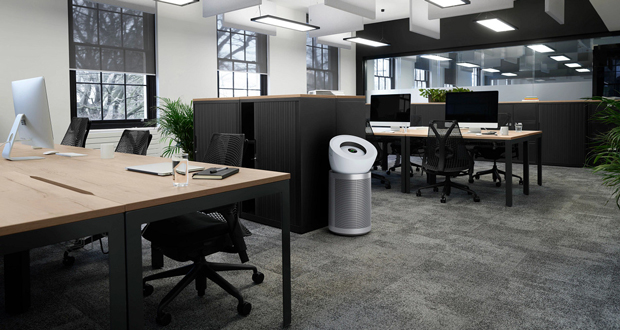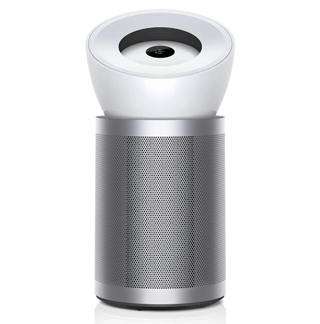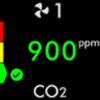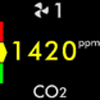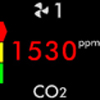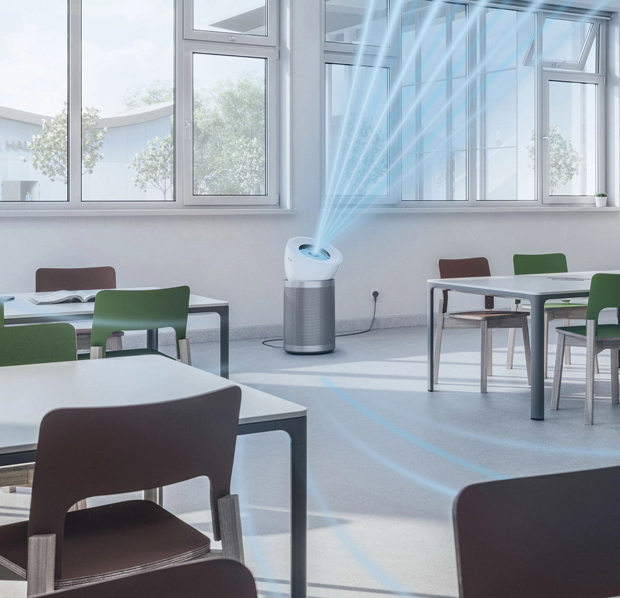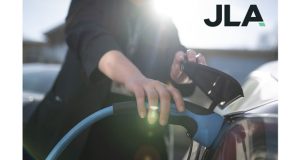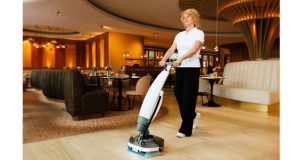Designed for professional use, the Dyson HEPA Big+Quiet Formaldehyde addresses issues around air quality in shared spaces, taking indoor purification further – literally
- Dyson’s quietest yet most powerful purifier: The Dyson HEPA Big+Quiet Formaldehyde purifier is borne of Dyson’s longstanding expertise in airflow, acoustics, filtration and compressors.
- Cone Aerodynamics: Dyson engineered airflow delivery system, offering more than double the airflow of previous Dyson purifiers, at up to 90 litres of airflow per second of purified air.
- CO2 sensor: Reports CO2 in real time, indicating to occupiers of shared spaces when to ventilate.
- Re-engineered motor bucket: Ensures quiet operation – meticulous re-engineering incorporating ingenious acoustic solutions including a Helmholtz cavity and labyrinth seal.
- Three-phase filtration system: Capturing up to 99.95% of ultrafine particles1, removing odours and gases like NO2, Benzene and VOCs and permanently destroying formaldehyde2.
Today, Dyson announces the launch of its new air purification technology for professional use in shared spaces – addressing the problem of indoor air quality in shared spaces.
There is increasing pressure on businesses to create healthy environments to support the wellbeing of employees and occupiers. Outdoor pollutants can enter shared environments and react with indoor pollutants, creating a complex mixture of dirty air – at times, causing indoor air to be more polluted than the outdoor air3. Higher CO2 levels indoors can impact wellbeing and cognitive abilities4 for occupiers of the space.
The Dyson HEPA Big+Quiet Formaldehyde purifier uses Cone Aerodynamics to deliver up to 90 litres of airflow per second of purified air, and a CO2 sensor to promote a clean and comfortable indoor environment. Designed with a fixed projection angle of 50 degrees to reduce airflow interference and operating at a Sound Power Level of 55.6 decibels of noise on maximum airflow speed, the Dyson HEPA Big+Quiet Formaldehyde purifier is Dyson’s quietest most powerful purifier yet.
Powerful projection for shared spaces
The Dyson HEPA Big+Quiet Formaldehyde purifier offers more than double the airflow of previous Dyson models, at up to 90 litres of airflow per second. To achieve this, Dyson engineers developed a new energy-efficient, low-pressure air delivery system: Cone Aerodynamics.
Cone Aerodynamics uses the Coanda effect to merge two streams of air over a smooth surface, resulting in a powerful and condensed jet of air that purifies air across large spaces, with minimal noise. Powerful projection is critical to ensure that the machine effectively delivers clean air in large, shared spaces and displaces dirty air back towards the filter. The Dyson HEPA Big+Quiet Formaldehyde purifier projects purified air at a fixed angle of 50o to reduce airflow interference.
Senses and reports CO2 levels in real time
Higher CO2 levels indoors can impact wellbeing and cognitive abilities5. The Dyson HEPA Big+Quiet Formaldehyde purifier incorporates a CO2 sensor, which provides live, colour coded readings of CO2 levels on the 1.44” LCD screen. If CO2 levels exceed recommended levels, the screen will show the reading in red, clearly indicating to occupiers of the space when ventilation is required.
Three-phases of fully sealed filtration
The Dyson HEPA Big+Quiet Formaldehyde purifier features a fully sealed filtration system to HEPA H13 grade6, ensuring purified air is projected back into the room. It’s three-phase filtration system is engineered to capture ultrafine pollutants, remove gases and destroy formaldehyde.
- The HEPA H13-grade particle filter is 3.8 times larger than its predecessor and captures 99.95% of particles as small as 0.1 microns, including dust and allergens. The larger filter lasts over 20,000 hours and can be replaced separately with the carbon filter, reducing unnecessary waste.
- Activated carbon filter combats NO2 specifically, which can be emitted from cooking in open-plan kitchen facilities, or by entering indoor environments from outdoor sources such as nearby road traffic. Acting like a sponge, the large surface area of the carbon filter captures gases like NO2, VOCs and odours.
- The Dyson Selective Catalytic Oxidation (SCO) filter has a unique coating, with the same structure as the Cryptomelane mineral. Its billions of atom-sized tunnels break down formaldehyde molecules into tiny amounts of water and CO2. It then re-generates with oxygen from the air to keep destroying formaldehyde continuously.
Sources of formaldehyde inside shared spaces include pressed wood products, cleaning agents, carpets, paint, wallpapers, and varnishes. Being 500 times smaller than particles the size of 0.1 microns, formaldehyde is particularly difficult to capture. When left undetected, it can lead to prolonged exposure due to continuous release of airborne chemicals, known as off-gassing. This can be exacerbated by modern, well-sealed spaces as pollutants become trapped inside and are unable to escape.
Quiet, even on full power:
Operating at a Sound Power Level of 55.6 decibels on maximum airflow speed, the Dyson HEPA Big+Quiet Formaldehyde purifier has been acoustically engineered with a low-pressure, high velocity system to minimise noise without compromising performance.
To achieve this, Dyson’s in-house team of acousticians and noise and vibration engineers optimised components within the motor and compressor:
- Broadband Helmholtz silencer is a cavity shaped to capture sound waves of certain target frequencies, formed of microporous material. As sound waves are transmitted from the source (the compressor) along the airflow pathways, the Helmholtz silencer traps sound energy and dissipates low-frequency noise.
- A unique labyrinth seal controls air recirculation by extending the airflow pathway, reducing the amount of energy it holds and reducing swirl in the recirculating air.
- By soft mounting the motor within the compressor, Dyson engineers were able to isolate motor vibrations from the machine at the source before they became amplified, minimising the acoustic level generated from vibrations.
Real-World Testing
The industry standard test for purifiers, Clean Air Delivery Rate (CADR), is tested in a small test chamber of 12m2 with just one sensor and artificial air mixing. For Dyson’s largest, quietest, and most powerful purifier to date, Dyson engineers constructed a 100m2 test chamber on Dyson’s Hullavington campus. The chamber is equipped with 36 sensors to measure the machine’s ability to thoroughly and evenly clean the equivalent of a large, open-plan space. By implementing this rigorous testing method, Dyson can ensure that its purifier performs optimally in real-world settings7, surpassing traditional testing methods to promote healthy and comfortable shared environments.
Contact
For more information visit https://www.dyson.co.uk/commercial/air-treatment/hepa-big-quiet-formaldehyde
See the Dyson Newsroom for all the latest updates from Dyson.
References:
1 Markets to insert local caveat from Claims Matrix ref. filter efficacy
2 Markets to insert local caveat from Claims Matrix ref. formaldehyde destruction.
4 Du, B., Tandoc, M.C., Mack, M.L., Siegel, J.A., (2020). Indoor CO2 concentrations and cognitive function: A critical review. Indoor Air. 30(6), 1067-1082. DOI: 10.1111/ina.12706
5 Du, B., Tandoc, M.C., Mack, M.L., Siegel, J.A., (2020). Indoor CO2 concentrations and cognitive function: A critical review. Indoor Air. 30(6), 1067-1082. DOI: 10.1111/ina.12706
6 Markets to insert local caveat from Claims Matrix ref. HEPA H-13 grade filtration
7 Markets to insert local caveat for 100m2 room testing from Claims Matrix

